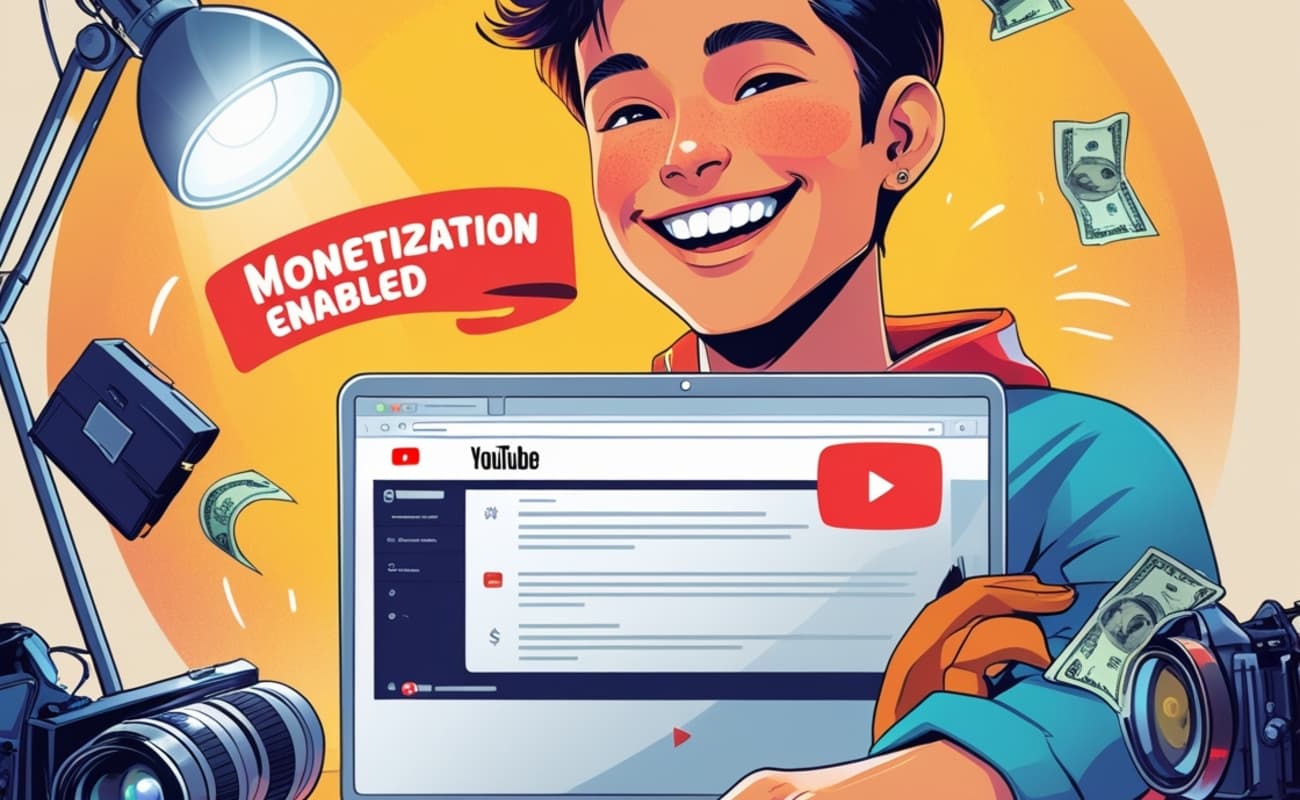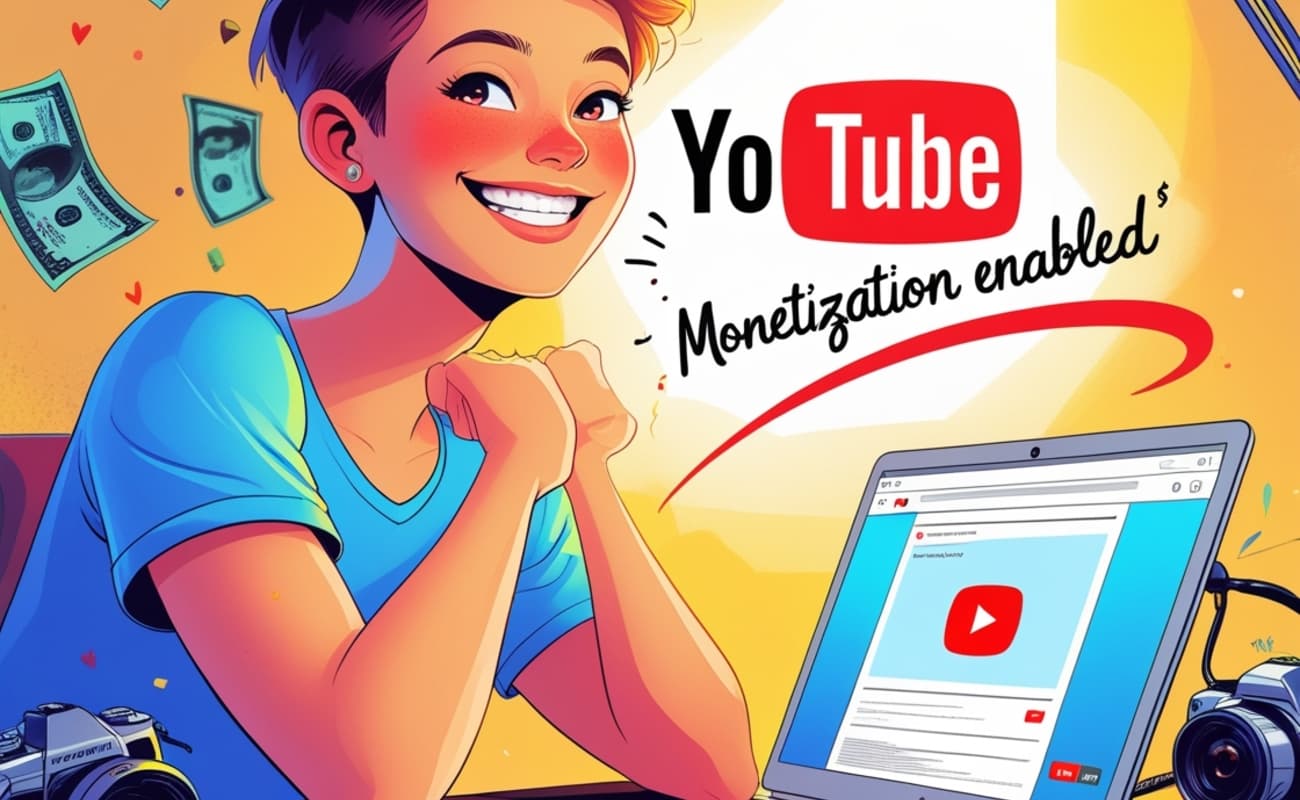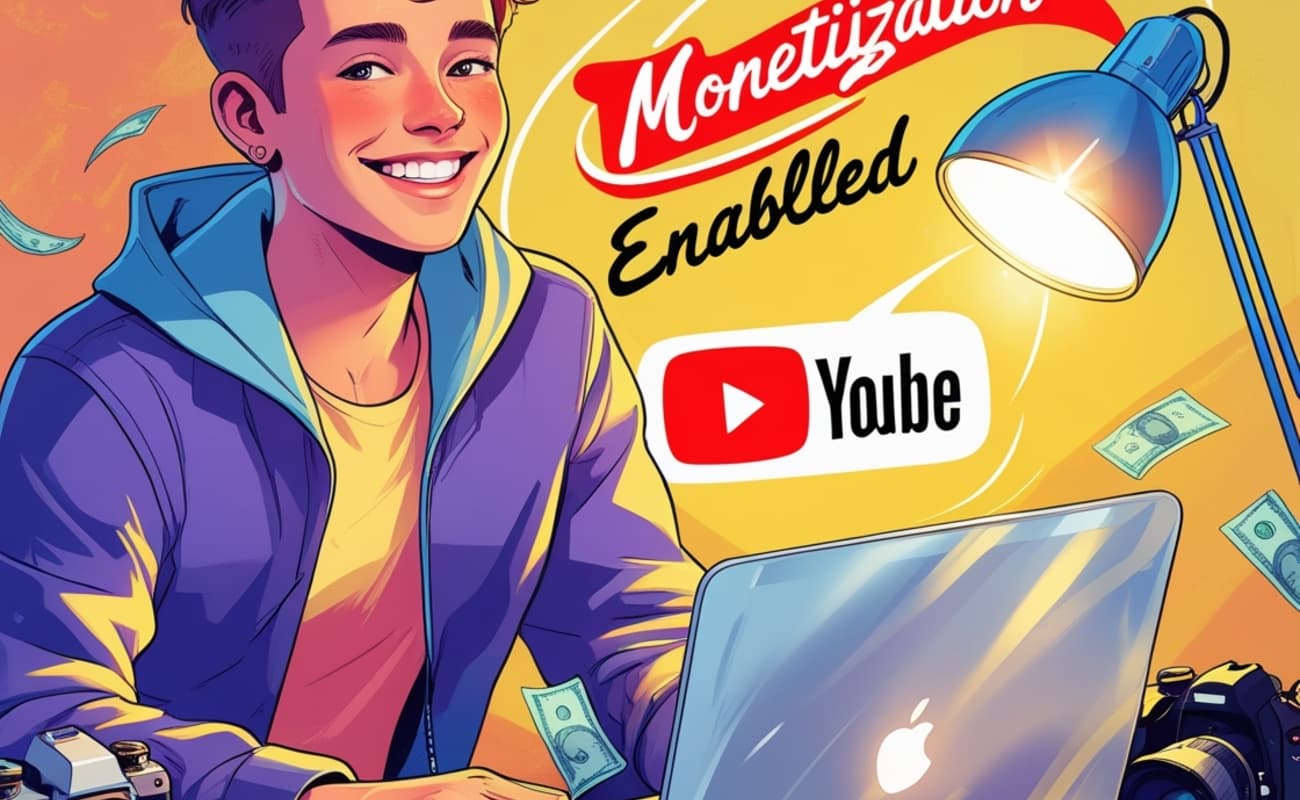If you’re looking to dive into the world of digital revenue, you might want to start with one of the most influential platforms around – YouTube. For more insights on monetizing your online presence, check out our website. In this article, we’ll explore the various mechanisms behind YouTube monetization, discuss what it takes to apply and meet the stringent requirements, and reveal realistic figures on YouTube income per month. Whether you’re a budding content creator or a seasoned influencer, understanding how YouTube earn money can truly alter your digital strategy.
Introduction: YouTube as a Revenue Powerhouse
YouTube isn’t just a platform for sharing funny videos or tutorials—it’s become a robust ecosystem for creators to earn a legitimate income. Many may assume that earning money on YouTube is pure luck or reserved for celebrities, but the reality is quite different. With the right strategy, audience engagement, and persistence, nearly anyone can turn their passion into profit. In today’s digital age, the art of how YouTube earn money is a blend of creativity, technical know-how, and savvy marketing. Have you ever wondered how a video uploaded on a random day can transform into a revenue stream?

How YouTube Earn Money: Understanding the Core Mechanisms of Revenue Generation
When people think of how YouTube earn money, they often jump straight to ads. And while advertising plays a huge role, the real magic lies in the multi-layered monetization model that YouTube has built over the years. For content creators, understanding how YouTube earn money can unlock a more strategic and sustainable approach to digital income. Let’s dive into the ecosystem of monetization and explore the many ways creators benefit from their presence on this platform.
Advertising Revenue
At the heart of how YouTube earn money is advertising revenue. This is the most recognized and widely used stream of income for creators. By joining the YouTube Partner Program (YPP), channels gain access to ad monetization. Ads are automatically placed before, during, or after videos based on user behavior, video topic, and advertiser targeting.
Here’s a brief overview of how it works:
| Element | How It Impacts Revenue |
|---|---|
| Viewer Demographics | Advertisers pay more to reach specific age groups or locations |
| Watch Time & Engagement | More engagement = more opportunities for ads |
| Video Content Type | Niche content can attract higher-paying advertisers |
How YouTube earn money through advertising is tightly linked to trends and viewer interaction. For creators, optimizing content for relevance and watch time is key to increasing ad revenue.
Channel Memberships & Super Chats: Interactive Income Streams
Another powerful way how YouTube earn money is through direct audience contributions. Channel memberships allow subscribers to pay a monthly fee for exclusive perks—think custom badges, members-only posts, and early video access.
Super Chats, on the other hand, come into play during live streams. Viewers can pay to pin their messages or gain attention from the streamer. These features represent how YouTube earn money by fostering stronger community bonds and rewarding creators for live engagement.
Sponsored Content & Brand Deals: Custom Campaign Collaborations
Sponsorships are a prime example of how YouTube earn money beyond its own ecosystem. As creators grow their following, brands begin to notice. Influencer marketing is on the rise, and YouTube channels are often seen as powerful marketing platforms.
Brands pay creators for:
Product placements
Dedicated reviews
Integrated mentions in videos
This form of collaboration is a win-win—it’s a direct reflection of how YouTube earn money through third-party engagement, giving creators a chance to diversify income while maintaining creative control.
YouTube Premium Revenue: Earning Without Ads
What happens when your viewers don’t see ads because they’re YouTube Premium users? That’s still a part of how YouTube earn money. YouTube Premium is a subscription service that removes ads, but creators are still paid a portion of the revenue based on how much time Premium users spend watching their content.
This subtle stream proves that how YouTube earn money isn’t always visible to the viewer—but it continues behind the scenes. It also encourages creators to produce binge-worthy, high-quality videos to capture more watch time from Premium users.

YouTube Monetization: Requirements & Application Process
Before diving into how YouTube earn money, every creator must first understand the necessary prerequisites for monetization. YouTube offers multiple ways to generate income, but each method requires dedication, quality content, and a commitment to community guidelines. Whether you’re aiming to earn through ads, memberships, or brand collaborations, meeting these initial criteria is essential for getting started in how YouTube earn money.
YouTube Monetization Requirements
To begin earning through the YouTube Partner Program (YPP), creators must meet a few specific requirements. While these requirements may evolve over time, the core principles remain the same: YouTube values quality content and viewer engagement. To be eligible for monetization, channels generally need to:
Have at least 1,000 subscribers
Achieve 4,000 watch hours in the last 12 months
Follow all YouTube policies and guidelines
Enable two-step verification on their Google account
These benchmarks help ensure that how YouTube earn money is based on genuine engagement and valuable content. Channels that meet these requirements not only have a solid foundation to generate revenue but also demonstrate consistency and relevance. Content creators should note that consistent high-quality content plays a significant role in both meeting these thresholds and building long-term, sustainable income from how YouTube earn money.
How to Apply for YouTube Monetization
Once a channel meets the required criteria, the next step is the application process. The journey to monetization through the how YouTube earn money ecosystem is simple but requires patience and attention to detail.
Navigate to YouTube Studio
In the YouTube Studio dashboard, creators can access the “Monetization” tab, which is the entry point for the application process.Check Eligibility
If your channel meets the subscriber and watch hour requirements, the “Apply Now” button will appear in the Monetization section. If not, the system will guide you on what steps to take to become eligible.Agree to YouTube Partner Program Terms
Creators must agree to the terms of the YouTube Partner Program, outlining policies on content usage, monetization, and the revenue-sharing structure.Link AdSense Account
To start earning from ads (a key way how YouTube earn money), creators must connect an AdSense account to their YouTube account. This allows YouTube to send payments based on ad revenue.Submit for Review
Once everything is in place, creators submit their channel for review. During the review process, YouTube will check for compliance with community guidelines, copyright policies, and the authenticity of content.Wait for Approval
The review process may take a few weeks, and while waiting, creators are encouraged to continue uploading content and engaging with their community. If the channel meets all of YouTube’s guidelines, the creator will be accepted into the YouTube Partner Program.Start Earning
Once approved, creators can start earning through various monetization tools offered by YouTube, such as ad revenue, Super Chats, memberships, and YouTube Premium revenue. This is where how YouTube earn money becomes tangible, as creators now have access to multiple income streams.
Insights on YouTube Income Per Month
Many aspiring creators are curious about how YouTube earn money and what kind of monthly income they can expect from their channels. While the figures can vary widely based on niche, audience size, and engagement, understanding the approximate income potential is essential for anyone looking to monetize their content. Channels in competitive niches such as gaming, tech, and lifestyle tend to report higher earnings compared to those in more niche sectors. The variability in how YouTube earn money is primarily influenced by factors such as the number of monetized views, the placement of ads, and demographic differences among the audience members.
It’s important to keep in mind that YouTube income is not fixed. Creators can expect fluctuating earnings based on multiple factors. For example, during certain times of the year—like the holiday season—advertising rates often increase, boosting ad revenue. However, outside of peak times, revenue might dip. In any case, how YouTube earn money varies significantly across different types of content and creator strategies.

Maximizing Your Earnings: Strategies and Tips
There’s no magic formula for success, but there are several actionable strategies that creators can employ to ramp up their revenue. Delving into the world of analytics, increasing user engagement, and aligning with the platform’s ever-changing algorithm are crucial steps for boosting earnings on YouTube. Let’s explore some practical tips that can help transform your channel’s performance.
| Strategy | Description |
|---|---|
| Content Quality & Consistency | Invest in high-quality production and post regularly. Consistent uploads build viewer trust and improve algorithmic rankings. |
| Engagement Optimization | Encourage comments, likes, and shares. Engage with your audience through Q&As, live streams, and community posts. |
| Analytics & Adaptation | Regularly review your channel analytics to understand viewer behavior. Adapt your content strategy based on trends and feedback. |
| Diversify Revenue Streams | Combine ad revenue with sponsored content, memberships, and even merchandise to stabilize income. |
Have you ever considered why some channels seem to skyrocket overnight while others struggle for views? It often comes down to how well the creator leverages these strategies and adapts to changes. Regularly updating your strategy based on actionable insights can significantly impact your overall success on the platform.
Real Experiences and Success Stories on YouTube
Whereas statistics and strategies offer the background, nothing motivates more than real-life success stories. A lot of today‘s most successful influencers began as amateurs who learned the ins and outs of how YouTube make money by trial and error, side projects, and hard work with their followings. For example, there are numerous tales of creators who struggled at first to qualify for the YouTube monetization threshold but then found their turning point. Maybe it was a viral clip or a timely sponsored series, but these creators emphasize the importance of persistence and ongoing learning.
Experience is priceless. I still recall the early days when each view and comment seemed like a monumental victory. It wasn‘t about the money—it was about reaching an audience and building a community. Have you ever experienced that high when someone finally left a comment on your video after hours of effort? That feeling of accomplishment is what drives the motivation to continue perfecting one’s content and strategy. It‘s an ever-evolving journey, with each obstacle giving you the chance to learn more about what makes your audience tick and how you can better serve them.
Conclusion: Taking the Leap Into YouTube Monetization
The world of YouTube monetization is as exciting as it is lucrative. Learning how YouTube make money involves more than reading about ads—it‘s all about embracing various income streams, refining your content strategy, and consistently evolving with the digital world. Even if complying with the YouTube monetization criteria and succeeding in applying seems intimidating at first, every move you make to create good content is a move towards financial independence and artistic satisfaction.
In the fast-paced digital age we live in today, making sure that your content appeals to your audience and that you‘re making the most of all monetization tools at your disposal can be the difference between success and failure. The internet, after all, is constantly changing, and so must your approaches. Whether you‘re looking for increased monthly income or merely seeking to share your interests with the world, the YouTube monetization secrets are at your fingertips. So, are you ready to monetize your channel?
FAQ
1. How can I apply for YouTube monetization?
To start monetizing your channel, you need to join the YouTube Partner Program by ensuring your channel meets the minimum eligibility criteria (such as subscriber count and watch hours) and then submit an application through YouTube Studio. Once submitted, your channel will undergo a review process to ensure compliance with community guidelines and copyright policies.
2. What are the key YouTube monetization requirements?
YouTube has set specific guidelines to maintain content quality. Generally, you need to have a significant number of subscribers, meet a minimum threshold of public watch hours over the past 12 months, and strictly follow the platform’s community and copyright policies. These requirements help ensure that your channel is engaging and authentic.
3. How much can I expect to earn per month on YouTube?
The income per month on YouTube can vary widely depending on your niche, audience engagement, and the diversity of revenue streams you use. While some channels may earn only a modest amount initially, others—with strong strategies and high-quality content—can generate substantial monthly incomes. Remember that building a sustainable revenue stream takes time and consistent effort.
4. Does diversifying revenue streams really help?
Absolutely. Relying solely on advertising revenue can be risky due to fluctuations in ad rates and viewership. Incorporating other streams such as channel memberships, super chats, sponsored content, and YouTube Premium earnings not only spreads out the risk but also increases your overall revenue potential.
5. What strategies can I use to optimize my YouTube earnings?
Focus on producing quality, consistent content that increases viewer engagement. Utilize analytics to understand your audience better and tweak your content accordingly. Engage with your viewers directly, experiment with various monetization methods, and always stay updated on algorithm changes to maintain and boost your channel’s visibility.
For more detailed insights on making money online, be sure to check out our related article on earn money online app and explore additional expert tips from trusted external sources like YouTube’s Official Monetization Guidelines.
